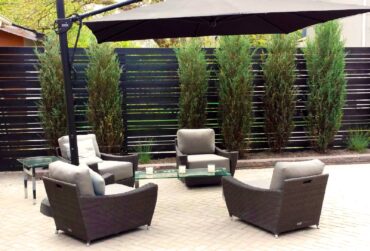
Wood is a focal point of many homes and can be seen on everything from siding and millwork to docks, decks and outdoor furniture. Wood is a beautiful, durable and versatile material, but it must be protected properly to stand the test of time. Water, UV rays and fungi can all damage the wood at your home.
Keeping the wood looking good — and maintenance to a minimum — is made easier by answering these questions when you’re shopping for the right wood product for your project.
Are you protecting a horizontal or a vertical surface?
In general, a horizontal surface is exposed to much more wear and tear than a vertical one. Choosing a coating system designed for the exposure your wood will face is an important first step.
Are there problem areas that need to be addressed?
There are certain things that will derail your project and should be addressed prior to starting. Is there an eavestrough you’ve been meaning to fix? Does water pool on an area of your deck or dock? Is splash back from rain or a sprinkler system always hitting an area of your siding? Any of these issues can make all your work for nothing, so take the time to fix them before treating the wood.
Are you using a penetrating finish product?
Choosing a penetrating wood protection formula will help shield the wood from weather and biological elements, while at the same time allowing the wood to “breathe.” Another benefit to penetrating products is that they dive deep into the wood, protecting from within and increasing dimensional stability of the wood.
What color are you going for?
Look for a wood protection company that offers lots of different color choices. You can opt for a clear or wood-colored finish to keep things looking natural. If you prefer a pop of color, there are a range of options from translucent to more saturated stains that still showcase the wood grain.
Have you properly prepared the wood?
Proper preparation is key to a successful outcome. Cleaning, sanding and then staining with multiple coats will enhance the natural beauty of your wood and help ensure longer maintenance cycles so you can sit back and relax.
Finally, remember that maintaining a wood surface is less costly and time-consuming than starting from scratch. For this reason, inspect the surface of your wood carefully from time to time and look for even the smallest signs that maintenance is needed.























